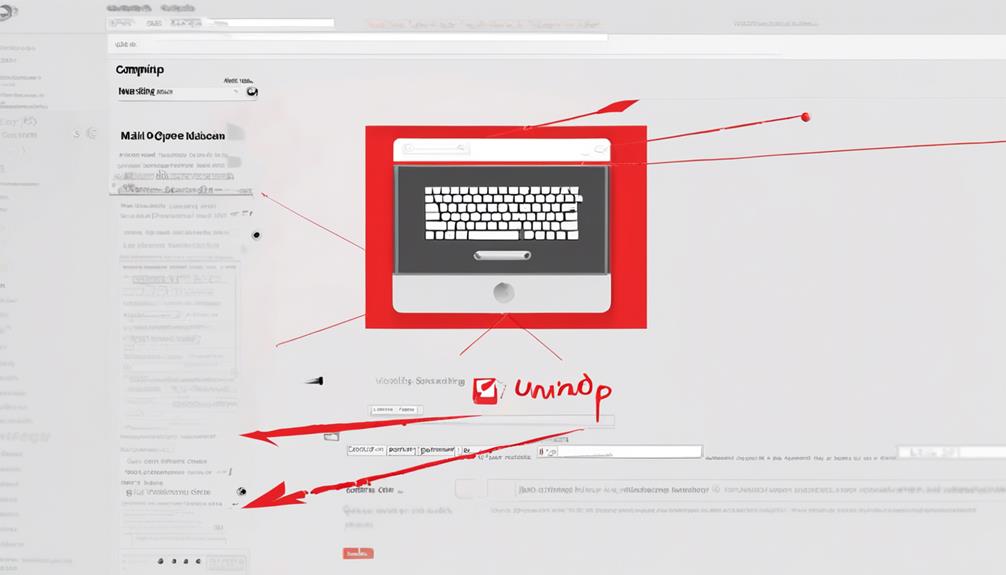Writing an email to your boss about a problem is akin to walking a fine line between being truthful and diplomatic.
The way we approach such conversations can significantly impact the outcome and our professional relationships.
In the following discussion, we will explore key strategies to effectively communicate concerns to your boss, ensuring clarity, professionalism, and a constructive approach that fosters a positive resolution.
Key Takeaways
- Promptly addressing issues demonstrates commitment to team success.
- Structuring emails with clear subjects and bullet points improves readability.
- Maintain a respectful and diplomatic tone when discussing problems.
- Clearly state the problem, provide evidence, and offer possible solutions.
Importance of Addressing Issues Promptly
Addressing issues promptly is crucial in maintaining a proactive and responsible approach to problem-solving in the workplace. When a problem arises, it's essential to communicate effectively with our Boss through email, clearly outlining the issue at hand. By promptly addressing the problem, we demonstrate our commitment to the team's success and productivity. Delaying the resolution can have a negative impact on our work and the overall team dynamics.
Providing specific examples and evidence of the issue's impact can strengthen our argument and help our Boss understand the urgency of the situation. Requesting a meeting to further discuss the problem allows for open communication and collaboration on finding solutions. This proactive approach not only showcases our problem-solving skills but also fosters a positive working relationship with our Boss.
Structuring Your Email Effectively

To effectively structure your email when addressing a problem with your boss, start by crafting a clear and concise subject line that highlights the main issue. A sample subject line could be 'Request for Meeting Regarding Project Deadline.'
Begin your email with a polite greeting to capture your boss's attention.
When discussing the problem or issue, be sure to clearly state its impact on your work or the team. Provide any necessary evidence or supporting information to back up your claim, such as specific examples or data.
When offering possible solutions, express your willingness to collaborate towards a resolution. If needed, use bullet points or numbered lists to make your email easier to follow.
Remember to choose your words carefully, maintaining a professional and polite tone throughout the email.
Choosing the Right Tone
As we aim to effectively address problems with our boss via email, one critical aspect to consider is adopting the appropriate tone in our communication. When writing a professional email expressing concerns or addressing your boss about an issue, it's crucial to maintain a respectful and diplomatic tone throughout the message. Remember to discuss the problem clearly and concisely, providing relevant details and examples to support your points. Avoid using emotional language or accusatory statements, as this can hinder effective communication and resolution.
In your email, consider requesting a meeting with your boss to further discuss the issue in person. Suggest a suitable time for the meeting and express your willingness to collaborate on finding a solution. End the email with a clear call to action, outlining your expectations moving forward.
Providing Clear Details

When outlining the issue in your email to your boss, it's essential to provide clear and specific details to effectively convey the problem at hand. To ensure that your message is received and understood appropriately, consider the following best practices:
- Clearly state the problem you're addressing in the email.
- Provide specific details about the issue, including any relevant dates, times, or incidents.
- Explain the impact of the problem on your work or the team.
- Include any supporting evidence or documentation to support your claims.
- Offer possible solutions or suggestions for resolving the problem.
By following these guidelines, you can effectively present the issue to your boss and facilitate a constructive discussion on how to address it.
Remember to maintain a professional tone throughout the email and provide feedback on how the problem is affecting your work.
Here is a sample email template to help you get started:
Subject Line: Issue Requiring Attention
Dear [Boss's Name],
I hope this email finds you well. I wanted to discuss an issue that has arisen recently regarding [clearly present the problem].
[Provide specific details and evidence supporting the issue].
This has had a significant impact on [explain the consequences on work or team].
I believe that by [offer potential solutions], we can effectively address this matter and improve our workflow.
Your attention to this matter is greatly appreciated.
Thank you for your time and consideration.
Best regards,
[Your Name]
[Contact Information]
Offering Solutions and Suggestions
Crafting effective solutions requires a thorough understanding of the issue and a collaborative approach to problem-solving. When addressing problems in an email to your boss, it is crucial to not only highlight the issue but also offer potential solutions. Here are some suggestions that we believe could work best in resolving the problem at hand:
| Solution | Benefits/Advantages |
|---|---|
| Implementing a new software system | Streamline processes and increase efficiency |
| Introducing regular team meetings | Enhance communication and foster collaboration |
| Providing additional training | Improve skills and knowledge within the team |
| Hiring temporary staff | Alleviate workload during busy periods |
Frequently Asked Questions
How Do I Email My Boss About an Issue?
We typically approach addressing issues with our boss through direct, clear communication. It's essential to outline the problem, provide details on its impact, suggest potential solutions, and request a meeting for further discussion.
We aim for a professional and respectful tone, ensuring clarity in our subject line and throughout the email. Ending with a clear call to action and expressing gratitude for their time is key.
Proofreading for errors is crucial before hitting send.
How Do You Write a Professional Email About an Issue?
When writing a professional email about an issue, we focus on clarity, coherence, and professionalism.
We use logical structures with paragraphs and bullet points to break down complex information.
Headings and subheadings guide the reader.
Concise language effectively conveys the message.
We proofread for errors, state the reason clearly, and make specific requests.
Expressing gratitude and maintaining a professional, polite tone throughout is essential.
How Do I Write a Letter to My Boss About a Problem?
Sure thing!
When addressing the issue with our boss, we'll need to be clear, concise, and professional.
Let's outline the problem, suggest solutions, and request a meeting for further discussion.
It's essential to maintain a respectful tone and provide all necessary details for a complete understanding.
Once the email is drafted, we can proofread for clarity and professionalism before hitting send.
How Do You Express Your Concerns to Your Boss?
When we express our concerns to our boss, it's essential to be transparent and clear. We should approach the conversation with respect and professionalism, outlining the issues and providing suggestions for resolution.
Requesting a meeting to discuss further can help ensure effective communication. Keeping a polite and courteous tone is crucial, along with proper email etiquette.
It's important to be concise and focused while also being open to feedback and collaboration.
How to Address a Problem in an Email to Your Boss While Requesting Technical Support?
When facing a technical issue at work, it’s important to address it professionally. In your email technical support request to your boss, outline the problem clearly and concisely. Provide any relevant details or error messages, and request the specific technical assistance needed. Be respectful and appreciate your boss’s prompt attention to the matter.
Conclusion
In conclusion, addressing problems promptly is key to maintaining a productive work environment. Remember, 'a stitch in time saves nine,' so don't hesitate to communicate issues to your boss in a clear and respectful manner.
By offering solutions and suggestions, you demonstrate your commitment to finding a resolution and working towards a positive outcome.
Keep your email concise, professional, and diplomatic for the best results.









